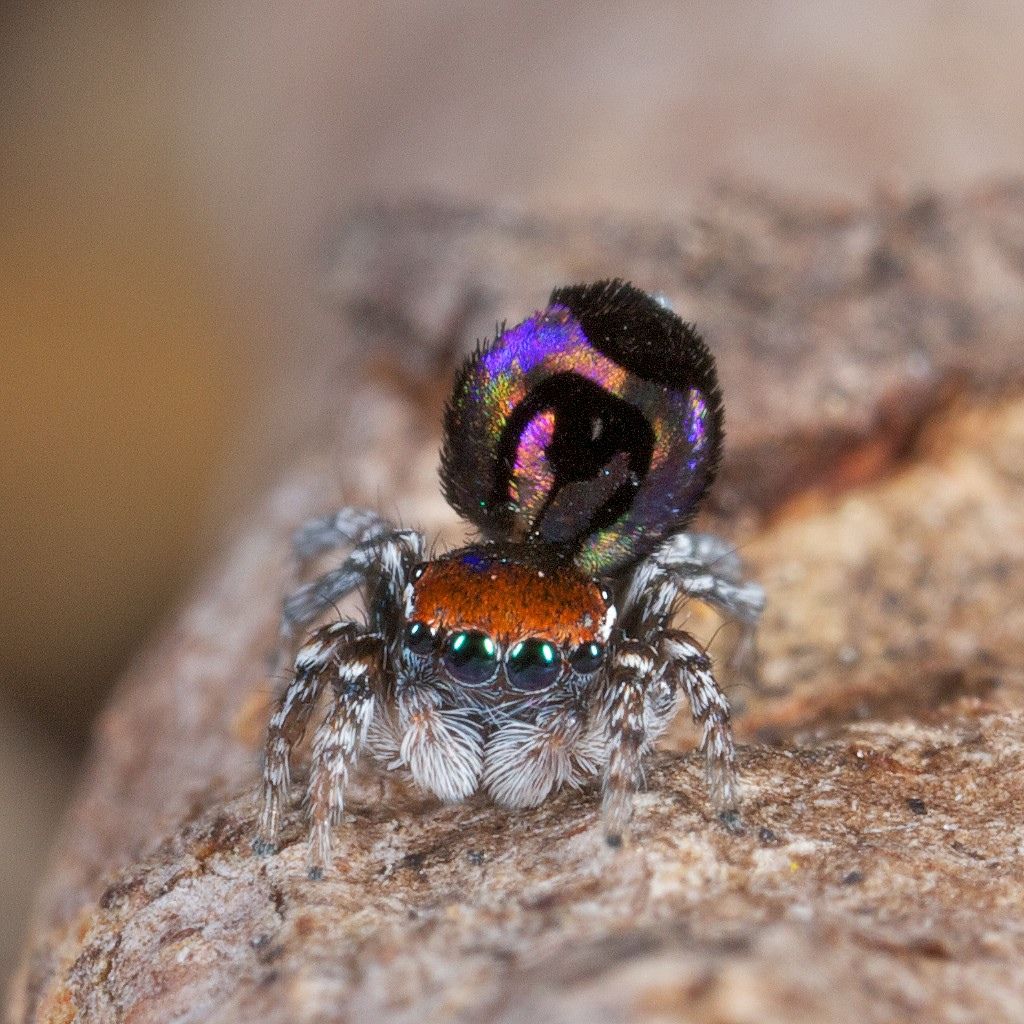
How does a peacock spider's butt get so shiny? The answer could inspire changes in optic technology.
Peacock spiders sport colorful, iridescent scales on their backs, which they flaunt to attract females, the same way a peacock flaunts its feathers. Despite being so tiny—the biggest species' growing to the size of a pencil eraser—they have flashy back sides that display a full rainbow of color. In case that's not enough, they do a mating dance to entice females.
Researchers at various institutes and universities all over the world decided to study how the structure of these scales could contain "nature's smallest rainbow," and published their findings in Nature Communications.
Electron microscopy and optical modeling helped the team visualize the iridescent backside of the peacock spider. Then they used an advanced nano 3D printer to print off several highly-detailed scales with different properties from the spider's scales to determine which ones created the iridescent glimmer.
They found that the secret lies in the curved shape of peacock spider scales, and how that interacts with with incredibly small grating surfaces on the scales. Together, those shapes are able to separate and isolate light, reflecting it at different wavelengths. To the human (or spider) eye, those wavelengths represent the colors of the rainbow.
Although humans can make rainbow iridescent materials, scientists have never been able to do so on such a small scale. But through biomimicry, scientists may be able to use this new information to develop similar, useful structures.
Biomimicry, or biomimetics, is the development of technology that is inspired by the biological structures and processes in nature. For example, some insects can inspire robots to jump without legs or to change paces more efficiently. Most famously, plant burs that stick to fur and clothes inspired the invention of velcro.
In the case of the peacock spiders, according to the press release, research into their iridescence can inspire new developments in materials technology and optics.
"Who knew that such a small critter would create such an intense iridescence using extremely sophisticated mechanisms," said study co-author Dimitri Deheyn, a postdoc at the Scripps Institute of Oceanography, in the statement. The findings could have a practical application for technology used in space missions and also wearables used to detect chemicals.
SaveSave
SaveSave
Uncommon Knowledge
Newsweek is committed to challenging conventional wisdom and finding connections in the search for common ground.
Newsweek is committed to challenging conventional wisdom and finding connections in the search for common ground.
About the writer
Kristin is a science journalist in New York who has lived in DC, Boston, LA, and the SF Bay Area. ... Read more
To read how Newsweek uses AI as a newsroom tool, Click here.





